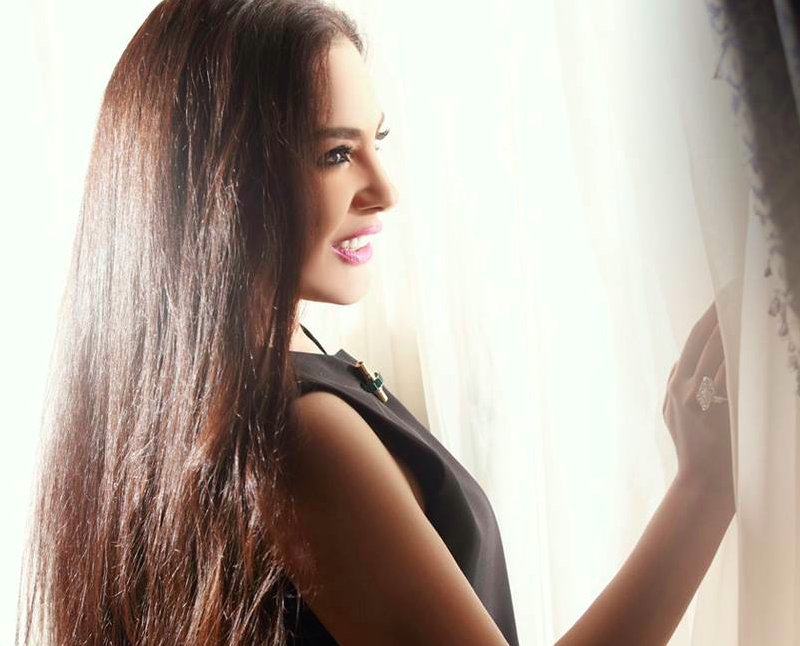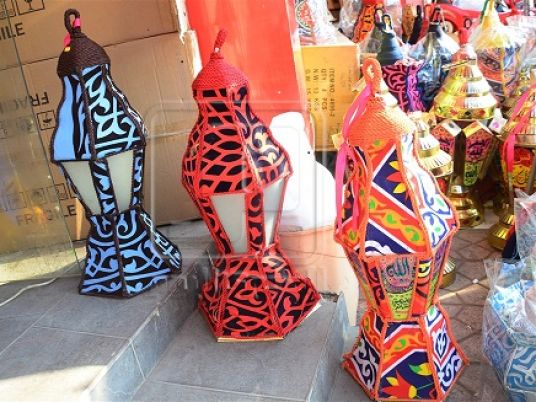Fifteen years have passed since the last recognizable fawazeer (quiz) show ran on Egyptian TV and still no one has reached the level of sophistication of the shows brought to the Ramadan screen by Egyptian starlets Sherehan and Nelly.
The fawazeer shows began as radio programs in 1958, presented by Samia Sadik and Amal Fahmi. Fawazeer on the radio presented listeners with a complicated riddle, promising a small reward to the person who solved it. The program lasted for over two years before it was adapted for local television.
Fawazeer Tholati Adwaa al-Masrah (The Riddles of the Theaters Trio), starring Samir Ghanim, al-Daif Ahmed, and George Sayedhom, was the first TV program revolving around this idea, and it established the association between Fawazeer and Ramadan. Fahmi Abdel-Hameed, the famous director behind most of the original fawazeer series, discovered the young actress Nelly, and together they created Fawazeer Nelly, which ran for six seasons, from 1975 until 1981, and made a name for the young actress.
In 1982, Fahmi and his regular collaborator, Samir Ghanim, created Fatota, a fawazeer series presented by a dwarf character in a green suit. The series appealed to both children and adults, and lasted for two seasons. Fatota was so popular, in fact, that the duo broadcast the series to a great deal of success on Syrian and Lebanese TV stations.
Then came the phenomenon Sherehan. The young actress started her iconic fawazeer show, Alf Layla We Layla (A Thousand and One Nights), under the experienced command of director Fahmi. The show was the hit of the 1985 Ramadan season, and every subsequent Ramadan season for the next three years.
The success of Alf Layla We Layla was due, in part, to the dedication of Fahmi and Sherehan. The director was rumored to have broken down machines to create his own special effects for the series, and the actress said to have spent her own money on her wardrobe. Soon, their hard work paid off and the actress rose to share the title of "Queen of Fawazeer " with her rival, Nelly.
The fawazeer fan base was, and still is, divided.
“Sherehan had a more interesting show than Nelly,” says Ali, 26, who prefers the brunette Sherehan to the blond Nelly. “She had cool costumes and better special effects.”
“I still search for Sherehan shows on Youtube,” says Rama, 27, who saw a number of Sherehan shows while growing up in Lebanon. “Sherehan is part of my childhood, and her iconic looks are never to be erased from my memory.”
“Nelly had a better understanding of the entertainment art,” says Magda, 43. “I remember loving the way she talked and the way she danced on her fawazeer, and I remember spending the evening silently watching the show with my family.”
Nelly returned to the Ramadan screen in 1990 with Alam Warq (A World of Papers). The show, however, was marked by the death its director, Fahmi Abdel-Hameed. Later, both actresses brought back the genre for a test run, Sherehan with Hagat We Mehtagat (All Sorts of Things) in 1994, and Nelly with Zay al-Naharda (On a Day like Today) in 1996. These efforts, however, weren’t as successful as previous shows.
Other Egyptian stars tried their luck with the genre, including Yehia al-Fakharani and Sabreen in Al-Monasabat (The Occasions), Dina with Abyad we Aswad (Black and White) in 1999, and Ghada Abdel Raziq in Farah Farah in 2003, all with less-than-memorable results.
Now the Lebanese star Mariam Fares is attempting her own fawazeer under the command of director Tareq Nour, famous for his innovative commercials and his own TV channel, Al-Qahira Wal-Nass. After wide speculation on which new starlet would star in the show, Fares managed to steal the title from the Lebanese diva Haifa Wahbi. She and Nour came up with the idea of Fawazeer Mariam. Viewers, however, are not impressed.
The show, divided into three segments, revolves around three different characters, all played by Fares. There is Mira, who has a thing for acting; Mimi, who can’t stop dancing; and Mima, a model for TV ads. The three characters don’t meet–maybe due to the fact that the only difference between them is in their name–but each asks the viewers a question.
Mira acts in a certain job and viewers need to know what career choice she made for the evening, while Mimi dances a traditional dance (much like Sherehan in 1988’s Hawel al-Alam (Around the World) fawazeer and the viewers guess the country of origin of each dance, while Mima recreates a famous TV spot for one of Nour's sponsors (product placement, anyone?) and the audience’s job is to guess what product she is selling.
“The show credits are extremely promising,” says Salma, 23, referring to the song and dance Fares performs during the beginning and ending credits. “The costumes reminded me of Lady Gaga’s videos and it sets my hopes high.” However, Salma was disappointed by the artist’s attempt at acting. “She is seriously unbearable as an actress,” Salma said. “The acting segment is too long with many repeated jokes. I couldn’t wait for it to be over.”
The show included shots of people watching the show in various locations around Egypt, including cafes, shisha joints, Youtube channels, and private homes. That technique might have made people laugh at first, but after a while it became simply repetitive.
Shereen, 25, seems to disagree, finding the show to be “funny and entertaining, with a hint of the old Sherehan taste in the outfits, especially in the dancing segments.” Still, Shereen points out that, “Mariam sometimes overkills it by imitating Sherehan down to the makeup and body language.”
Ayman, 32, who works as a graphic designer, thinks that “the end product of the show was extremely well-planned, the beautiful and amazing remixes of music with the nice and well-made visual effects really allows the show to shine.” However, he does not entirely support the show. “Although it looks amazing on the outside, the jokes are not well-written, the script is not finalized with a great deal of care, and the material Mariam is working from is not exceptionally strong.”
The show may prove to be better than previous attempts to bring the fawazeer genre back to life, but it is still a long way from giving us a fawazeer show as worthy as the ones presented by Sherehan and Nelly.




